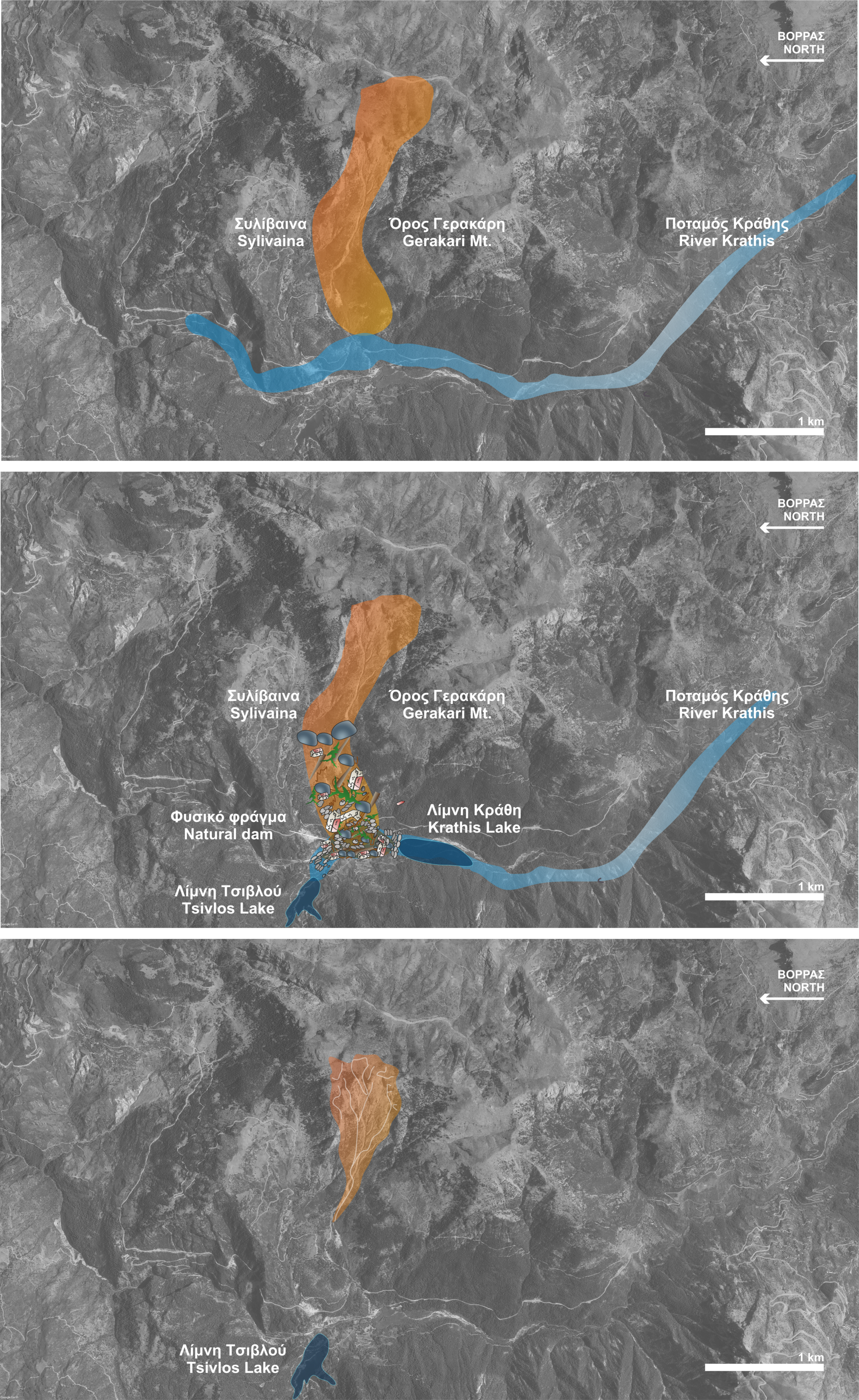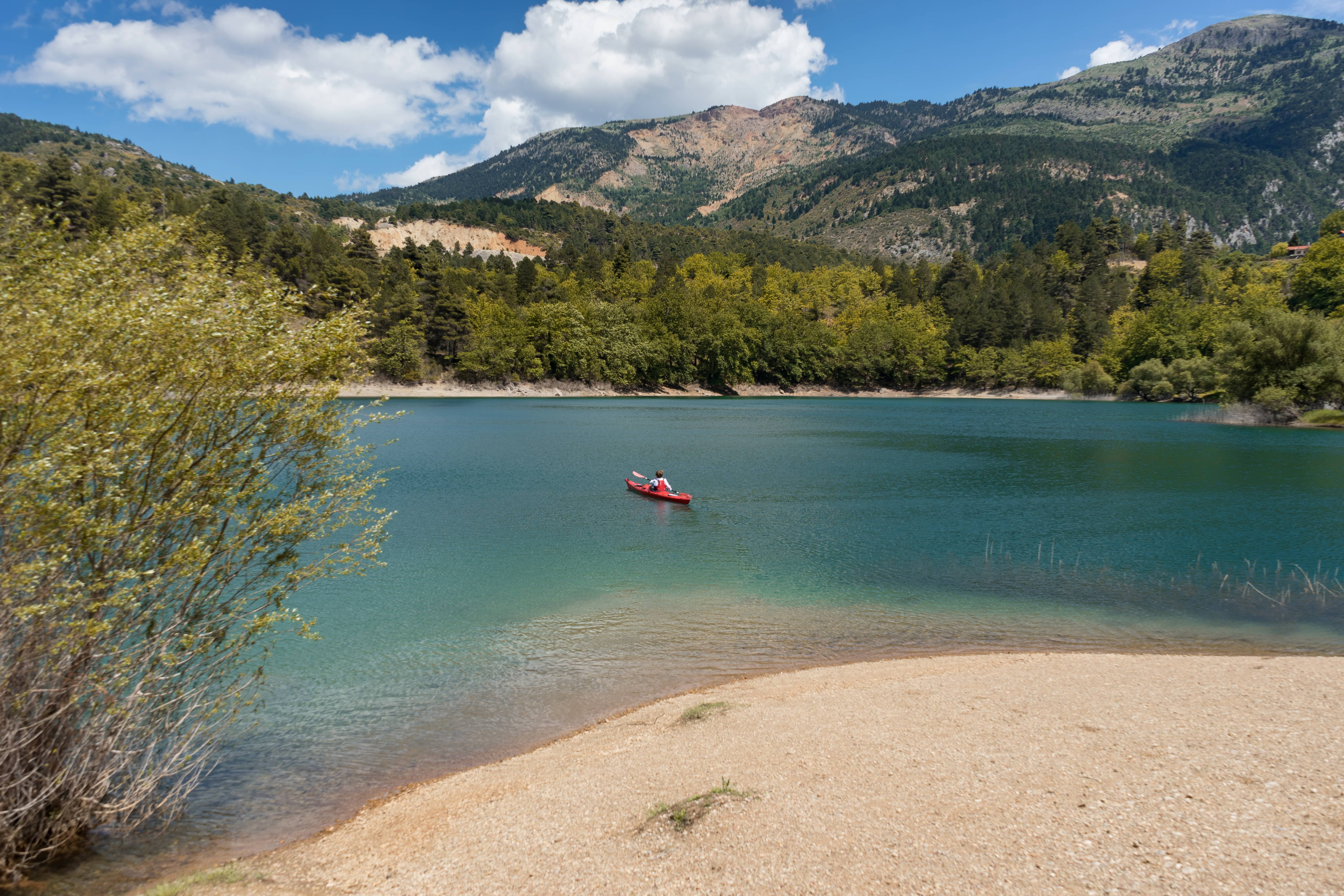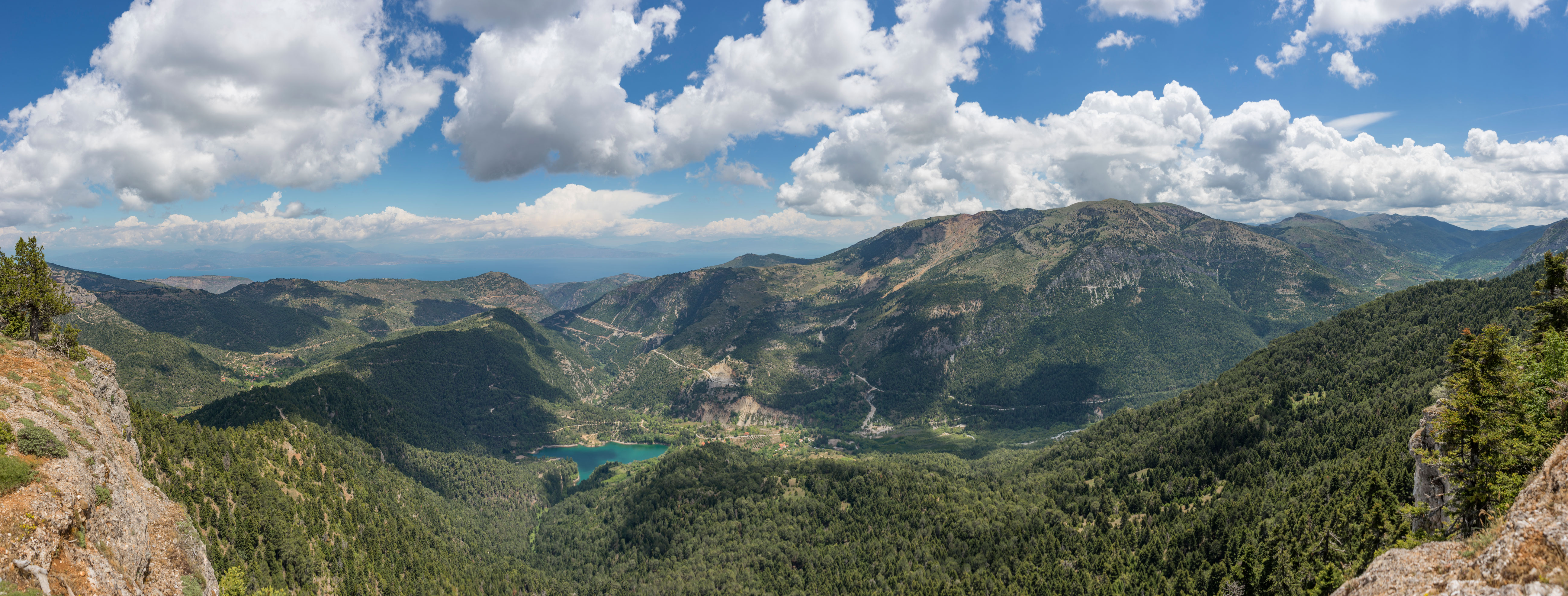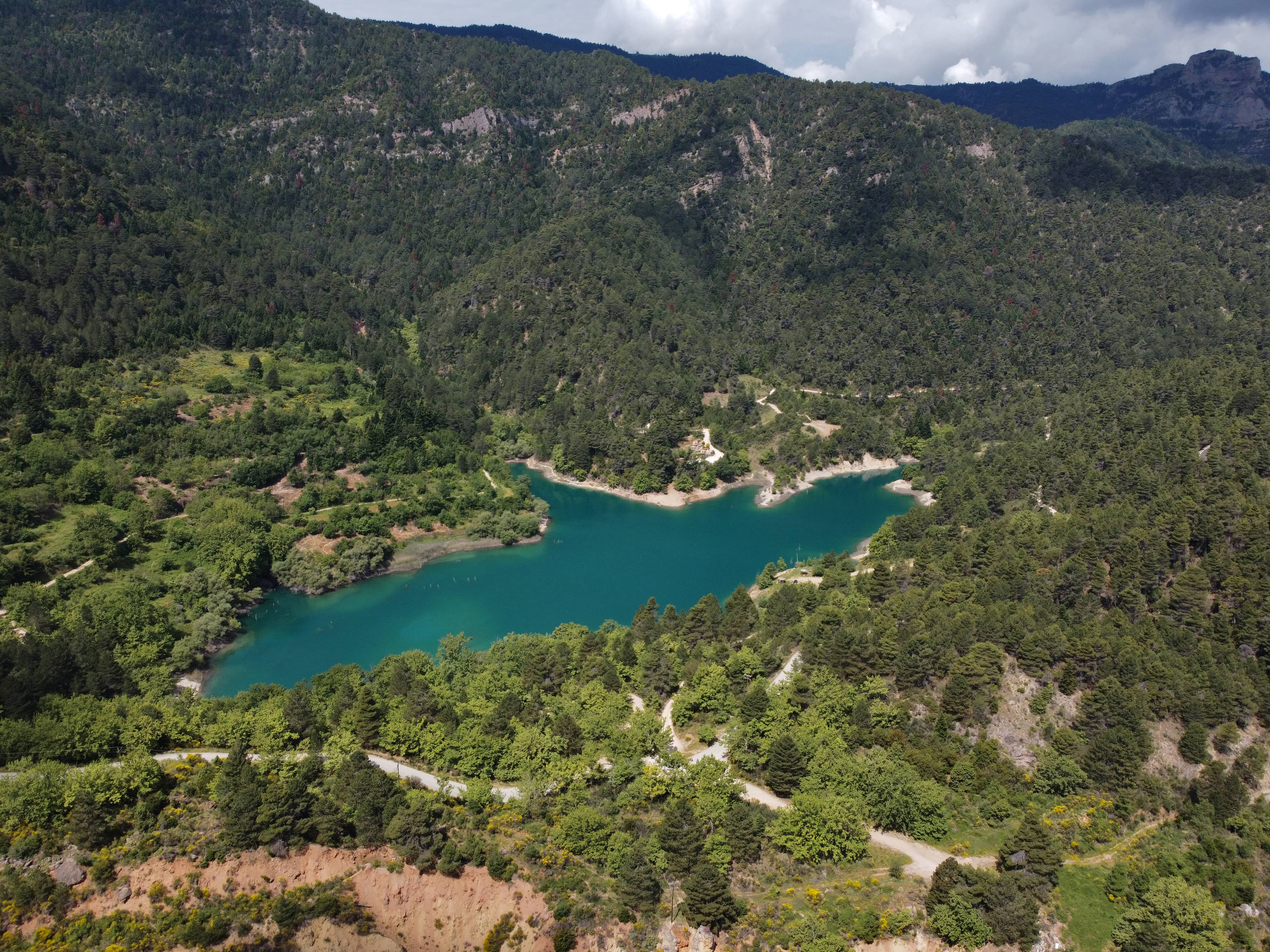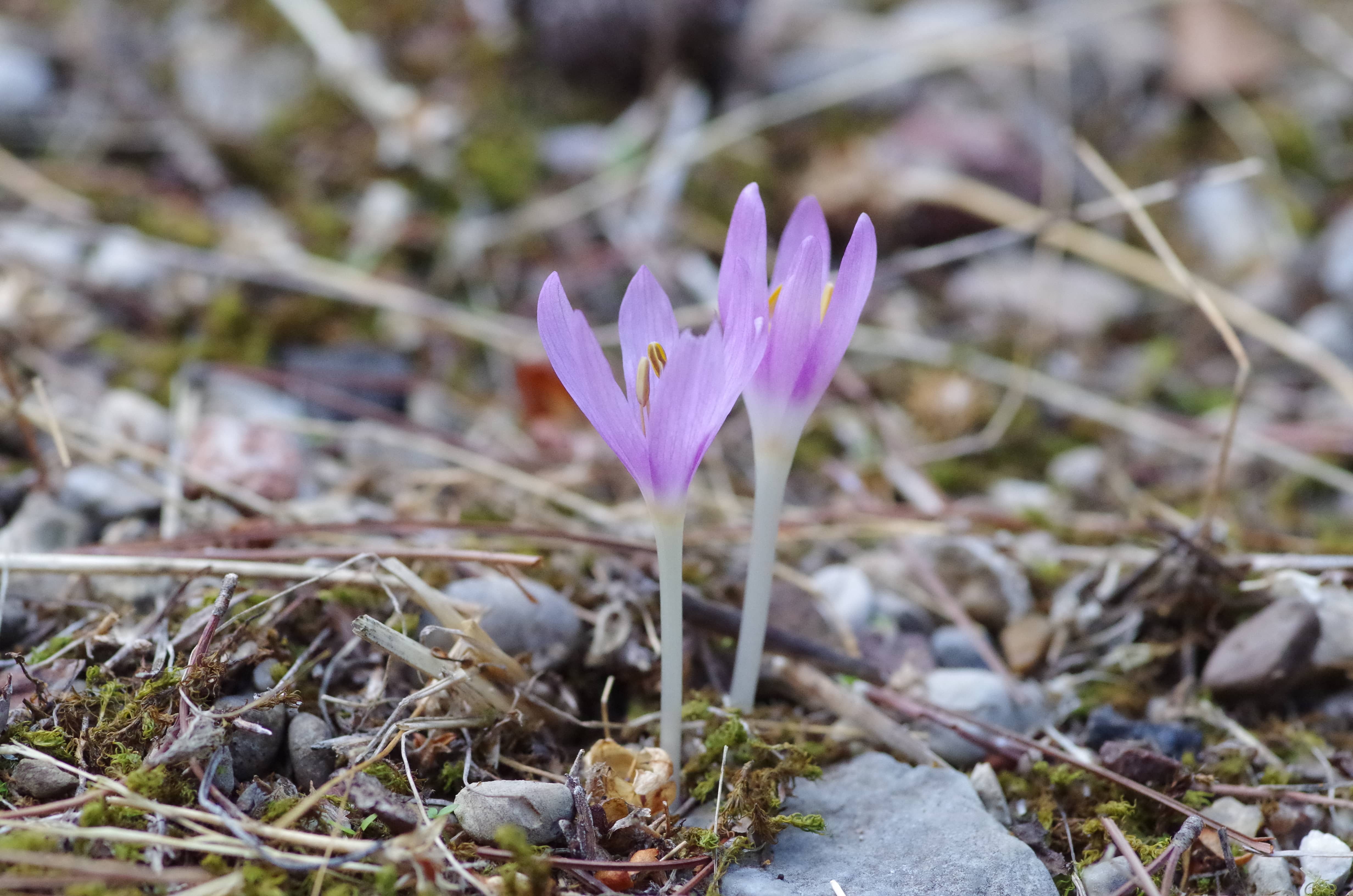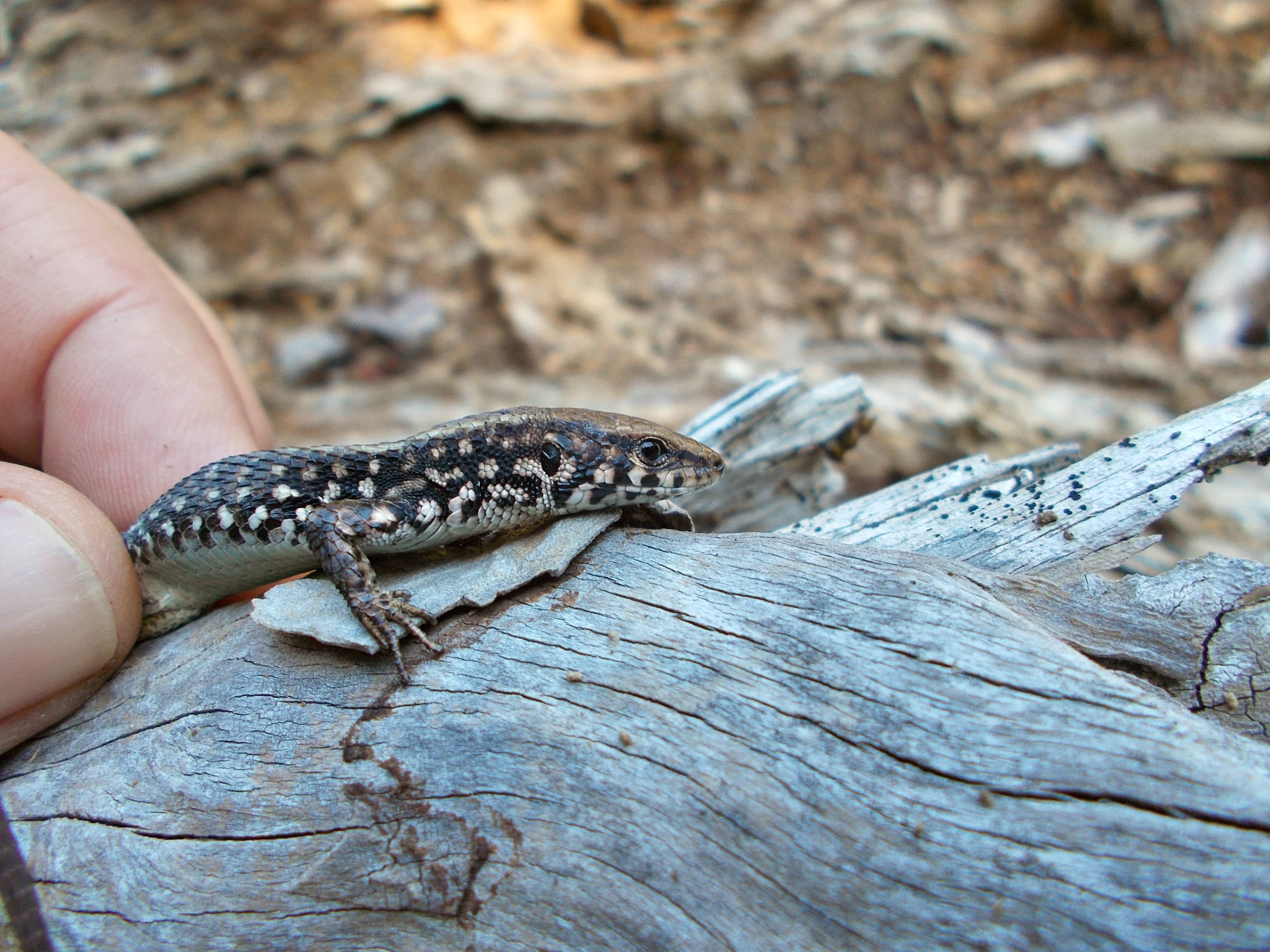A LANDSLIDE AND A LAKE
Lake Tsivlou is one of the youngest natural lakes in Europe with an age of around 110 years. It is a beautiful young mountainous lake that owes its formation to a landslide. The name of the lake comes from the village of Tsivlos which was partially destroyed after the landslide.
GEODIVERSITY
In 1913 in eastern Achaia the heavy rainfalls that prevailed led to landslides and rockfalls in the wider area. A large landslide occurred and large rocks slided from mount Gerakari, above Sylivaina village, with high speed and ended up in the river Krathis. The uncontrolled course of the rocks carried away and destroyed everything that was found in their way such as the villages Sylivaina and Tsivlos, and finally stopped its course in Krathis river blocking its flow. The fact that Krathis flowed in a narrow valley in combination with the natural dam that was created led to the blockage of its water flow and the formation of 2 individual lakes from the waters of Krathis. The two lakes were formed in the area where the valley was, one in the Krathis river valley along its flow (Krathis lake) and the other one west of the riverbed (Tsivlos lake).
Almost a year later, a huge flood occurred, which destroyed the natural dam formed by the landslide, destroying a large part of Krathis lake, while the present Tsivlos lake remained intact until today.
BIODIVERSITY
The area is also located within the Special Protection Zone (ZEP) of the avifauna “MOUNT HELMOS (AROANIA) – VOURAIKOU GORGE AND KALABRYTON AREA” (GR2320013). The avifauna of the area is of great interest and includes birds such as the Golden Eagle (Aquila chrysaetos) and the Eurasian eagle-owl (Bubo bubo).
Further around the lake there are forests with Aleppo pine (Pinus halepensis), black pine (Pinus nigra subsp. nigra) and Kefalonian fir (Abies cephalonica).
The European green toad (Bufotes viridis) has been recorded. Furthermore, reptiles as the endemic Greek algyroides (Algyroides moreoticus), the Balkan Greek Lizard (Lacerta trillineata), the grass snake (Natrix natrix) and the common wall lizard (Podarcis muralis) has been recorded. Around the lake live mammals, such as the European badger, Apodemus species, as well as the Golden Jackal (Canis aureus).

